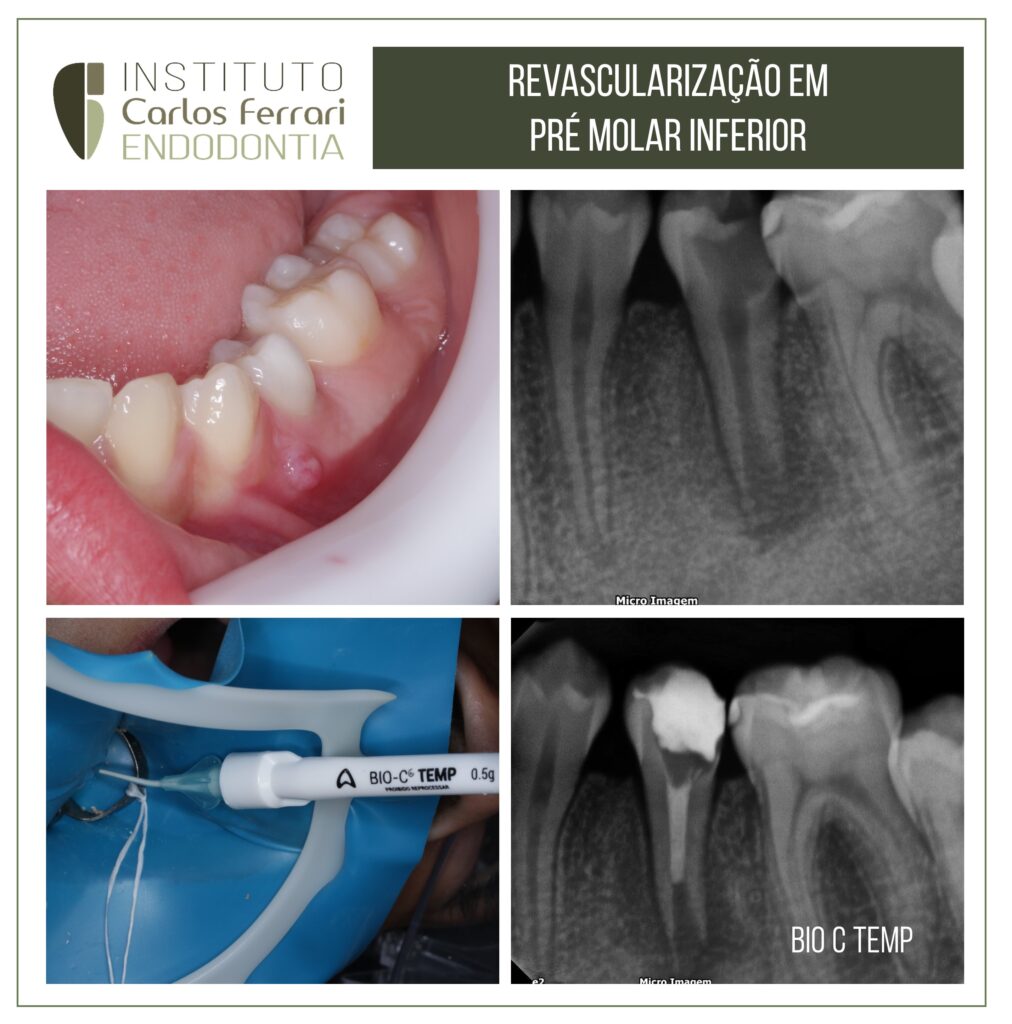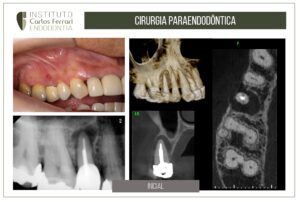Revascularization of a tooth with incomplete rhizogenesis.
A 12-year-old patient with a chronic periapical abscess on tooth 35 with incomplete root formation.
In the first session, we decontaminated and medicated with Bio C Temp (Angelus)
In the second session, after one month, the fistula had gone into remission and there were no signs or symptoms. Revascularization was chosen, followed by clot protection with Bio C Repair (Angelus). The person responsible was instructed on the need for follow-up.
Case conducted by student Mayumi Hashimoto, from the endodontics specialization course at APCD Bragança Pta.


In: Pulp revascularization in necrotic permanent teeth with incomplete rhizogenesis Leticia Rodrigues SOUSA, Anny Gabrielle Silva PEREIRA, Izabela Pastor DA SILVA, Janielle Emanuelle Resende DE SANTANA, Laerte Oliveira BARRETO NETO Rev. odontol. UNESP, vol.50, nSpecial, p.0, 2021 Introduction:
The complete formation of the dental root occurs in a period of up to three years after the eruption of the permanent tooth. Immature teeth that suffer some kind of trauma can have their root development interrupted, resulting in a process called incomplete rhizogenesis. In these cases, endodontic treatment is a challenge. The difficulties encountered are: the young age of patients, fragile dentin walls and developing apex, making it difficult to fill the root canal system. In this context, pulp regeneration becomes an alternative that promotes the formation of new dentin tissue inside the root canal.
Objective: To review the literature on existing scientific evidence regarding pulp revascularization in necrotic permanent teeth. Materials and Methods: This study is a literature review, in which LILACS and Medline/Pubmed databases were consulted, using as descriptors "Dental Pulp" "Blood Coagulation" "Endodontics", and articles and dissertations in English and Portuguese were selected. Results: The revascularization technique initially consists of cleaning and disinfecting the root canal, since the process is only effective when the canal is completely free of infection.
The second step is to induce the formation of a blood clot that will fill the root canal. The blood cells will induce the formation of a revascularized tissue by providing growth factors to the stem cells of the papilla, triggering an accumulation of undifferentiated cells that will form new tissues, thus increasing the thickness of the canal, elongation of the root, closure of the apex and return of vitality. Conclusion: The technique treatment time is shorter, and can be completed in one or two sessions, with the cost-benefit being a favorable factor. The greatest advantage is the induction of the end of root development with thickening and, as a result, the strengthening of the root walls.
Revascularization of a tooth with incomplete rhizogenesis





